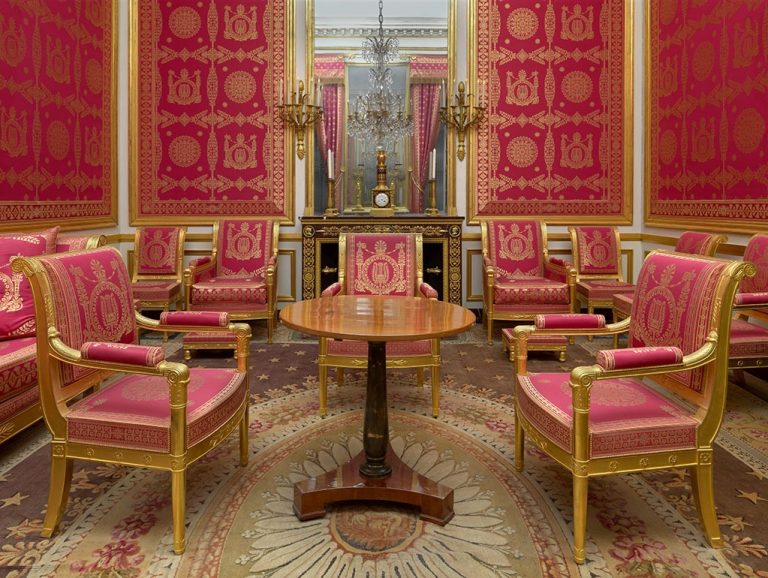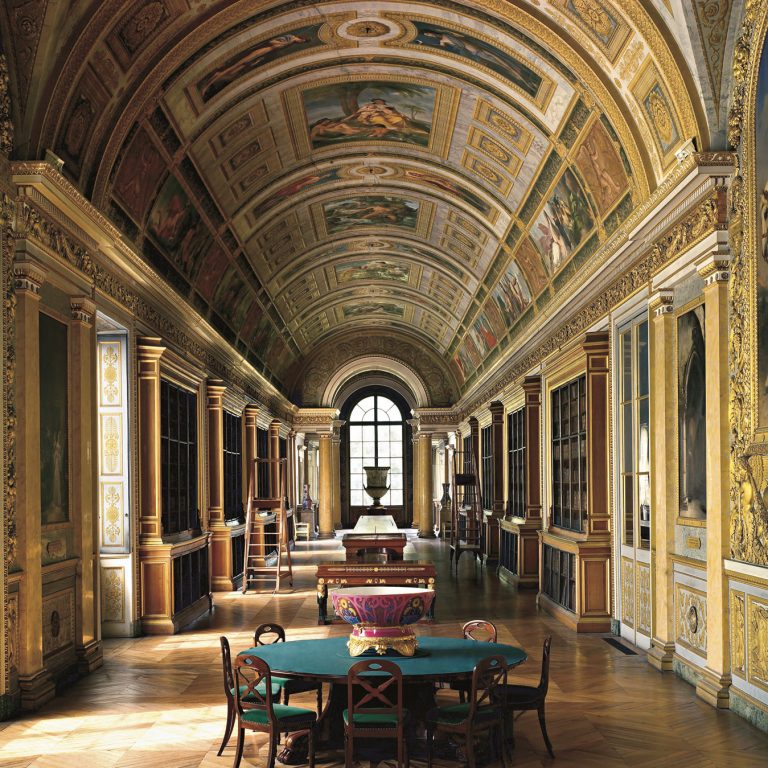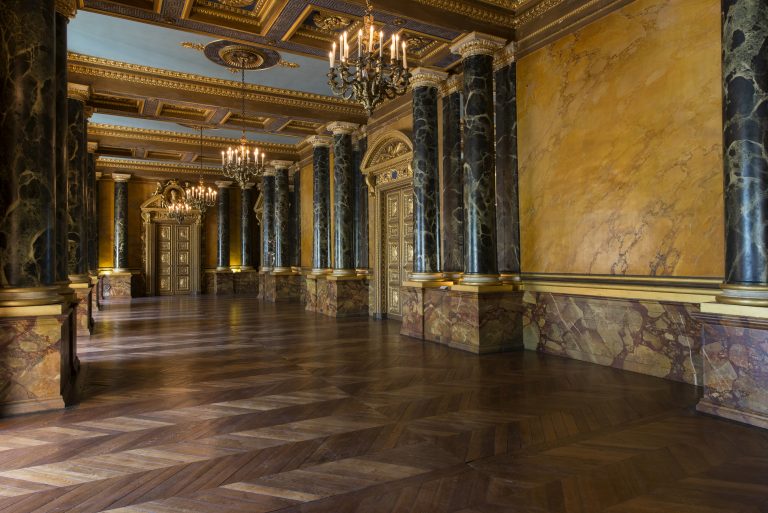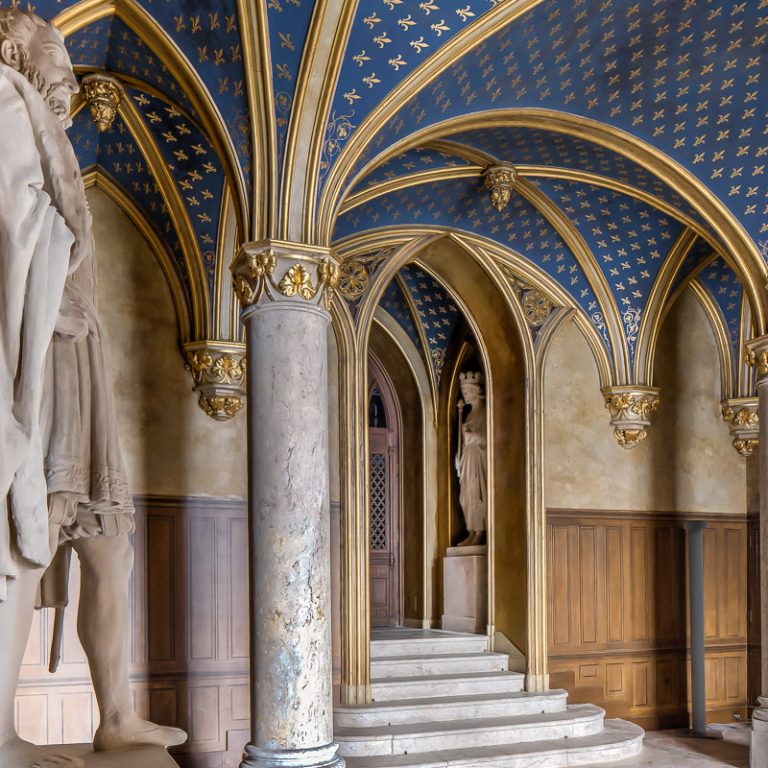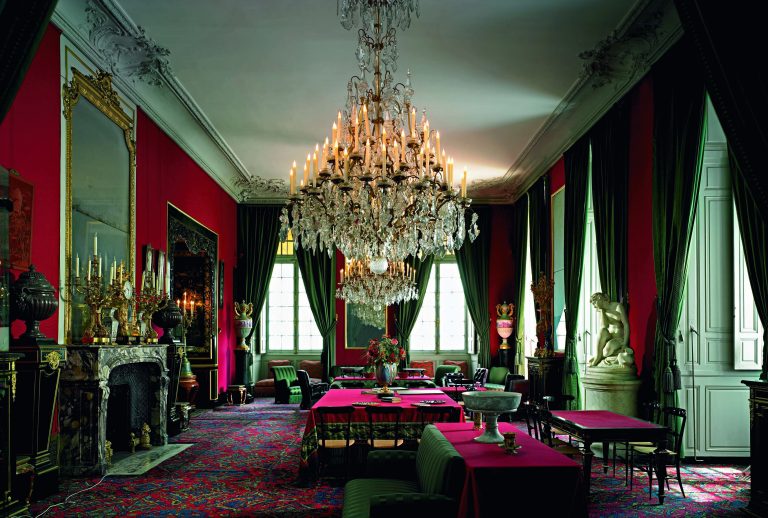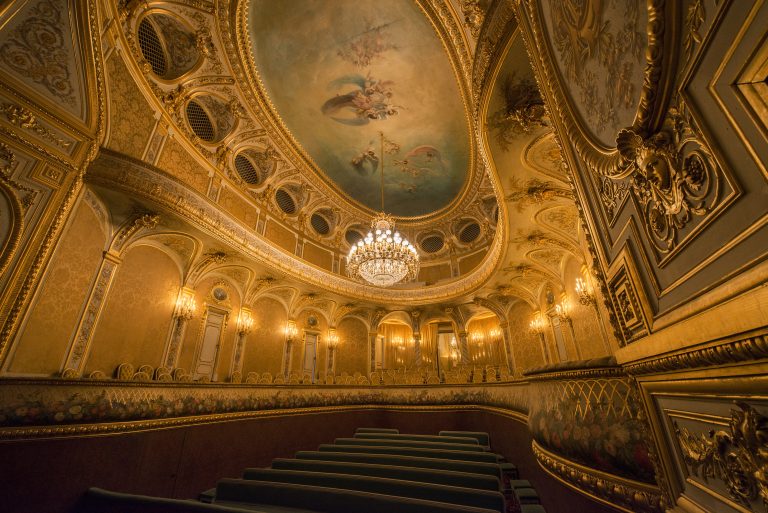1815- 1830: Restoring the House of Kings
Napoléon Ist saved the old castle of François Ist from ruin and propelled it into the ranks of the most splendid residences in Europe. After Waterloo and the return to the throne by Louis XVIII (Louis XVI’s younger brother), the monarch was able to acknowledge the extent of renovation work that had been undertaken by ‘The Usurper’. “ in our absence, noted Louis XVIII, we had a good caretaker “. After ten years of revolution and 16 years of Napoleonic power, Fontainebleau had become the living embodiment of the restored monarchy.
The Château de Fontainebleau revived its prestigious hunting past as the site of brief but frequent hunting trips by the princes of the House of France. Even though the name Napoléon Ist was wiped from its annals, the works of Louis XVIII nevertheless remained faithful those carried out during the Premier Empire. Napoleon’s throne room remained in place under Louis XVIII and the Usurper’s bedroom became the ‘grand bedroom of the king’. The small drawing room and the side table, where in 1814 “ Bonaparte signed his false abdication “ (Charles Rémard), continued to be put on display like a trophy.
Napoléon had left the reconstruction of the Gallery of Diane unfinished. The Restoration work was entrusted to Abel de Pujol et Merry Joseph Blondel and it became the largest decorative feature of the reign. Under a canopy of scenes illustrating the myth of Diana, the paintings of Charlemagne, Clovis, Saint-Louis, Joan of Arc and Henri IV brought to life the auspicious history of the French monarchy. The aptly named Restoration inspired numerous other works: the relocation to the apartments of a bas-relief of Henri IV in white marble, “ precious image of the most beloved of kings “ which was intended to be shown “ in this beautiful palace, for public admiration » (Charles Rémard), or the moving of the library to “ a bigger room so it can be further expanded “ (Charles Rémard).
It was so much work that the Restoration could not carry it all out, however it would be completed by the two following 19th century regimes: the July Monarch and the Second Empire, which radically transformed the appearance of the palace…
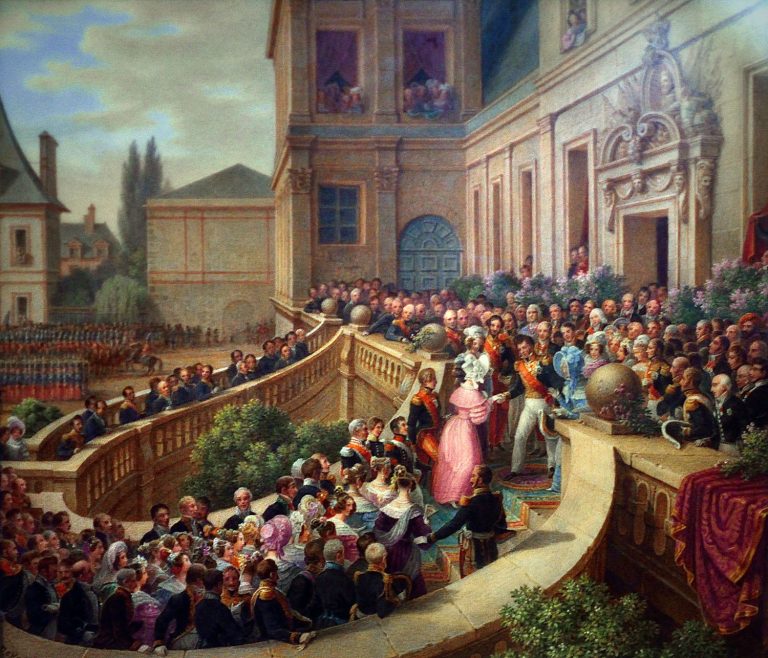
Louis-Philippe and History (1830-1848)
In 1830, the Restoration was swept aside by the revolution of the ‘Three Glorious Days’ and the cousin of Charles X, the Duke of Orléans, ascended to the throne under the name Louis-Philippe Ist. A Constitutional monarch, the king was nonetheless descended from the “ line of Saint-Louis “ and intended to satisfy his passion for history all while “ rising up the royal rankings “ (Comtesse de Boigne). Louis-Philippe was passionate about Fontainebleau, this palace where « the walls speak and the dead appear seemingly to gather together and entertain the living “ (Guizot). The reign of Louis-Philippe set in motion a complete restoration of the the building and these renovations are what we mostly see in today’s castle. The golden age of romanticism and Alexandre Dumas’ novels was distinguished by its unbridled historicism.
In order to host the marriage of the king’s eldest son, the Duke of Orléans, to Princess Helene of Mecklenbourg on 30th May 1837, the major historical refurbishment was undertaken – stencilled canvasses and cardboard-stone mouldings were used during this restoration: they started by creating ceilings, a Renaissance Revival style state room (The Hall of Columns), a Gothic entrance hall on the ground floor of the keep (The Saint-Louis Vestibule), and a Gallery of Plates erected by combining the remains of Henri IVs Gallery of Diane ‘Renaissance Revival’ panelling and 128 porcelain plates depicting the ‘historical epic’ that is Fontainebleau.
Effigies of the castle’s different kings were put back on display in the apartments, such as the great Henri IV on horseback etched into the chimney in the ‘Salon of Saint Louis’. The Renaissance was the great discovery of this reign. Using the ‘wax’ technique, painters from the 19th century such as Jean Alaux set to work on restoring the frescos in the ballroom. A final grand restoration project in the Gallery of François Ist was planned as the last work of a king who had “passion for the trowel”. The historical building site that Fontainebleau had become inspired artists such as Ingres and Delacroix, and a modernisation of the palace came with it: A new sense of comfort and glow was given to the old residence by the addition of flushing toilets and Carcel lamp lighting.
Despite all this work to put his stamp on the castle’s history and renew the grandeur of his ancestors, Louis-Philippe narrowly escaped an assassination attempt in the park in 1846. A disgruntled forest warden tried to shoot him. From king ‘hunter’ to king ‘hunted’, the incident showed the fragility of a political regime that was disputed from birth. Two years after this attempt in 1848, a revolution in Paris forced the last king to abandon the crown and flee the country…
The crown was taken up four years later by a final emperor who put the final touches to the Palace of Fontainebleau, which was by then a joint enterprise of around thirty rulers.
The Holiday Residence of Napoléon III et Eugénie (1852 – 1870).
Having come to power after the coup d'etat of 2nd December 1851, Emperor Napoléon III was already familiar with the Palace of Fontainebleau. At the age of two he was baptised on the knees of his uncle Napoleon Iston 4th November 1810 in the Chapel of the Trinity. Exuding vivid memories of the First Empire, Fontainebleau must have once again regained somewhat of an imperial extravagance where the Second Empire could shine. Within twenty years the Emperor and his wife, the Empress Eugenie, left a lasting impression on the home that they found modernised and completely furnished.
When the idea of a holiday residence and the beginnings of tourism developed at the same time, they built apartments offering a certain level of comfort. From 1860 they were looking to break free from the pompous ambiance of the grand apartments they had richly refurbished. Napoleon III and Eugenie created their own areas more adapted to the holidaying nature of their stays. To do this, they invested in the newer parts of the castle built by Gabriel in the 17thcentury: The Gros Pavillon and the Louis XV wing…
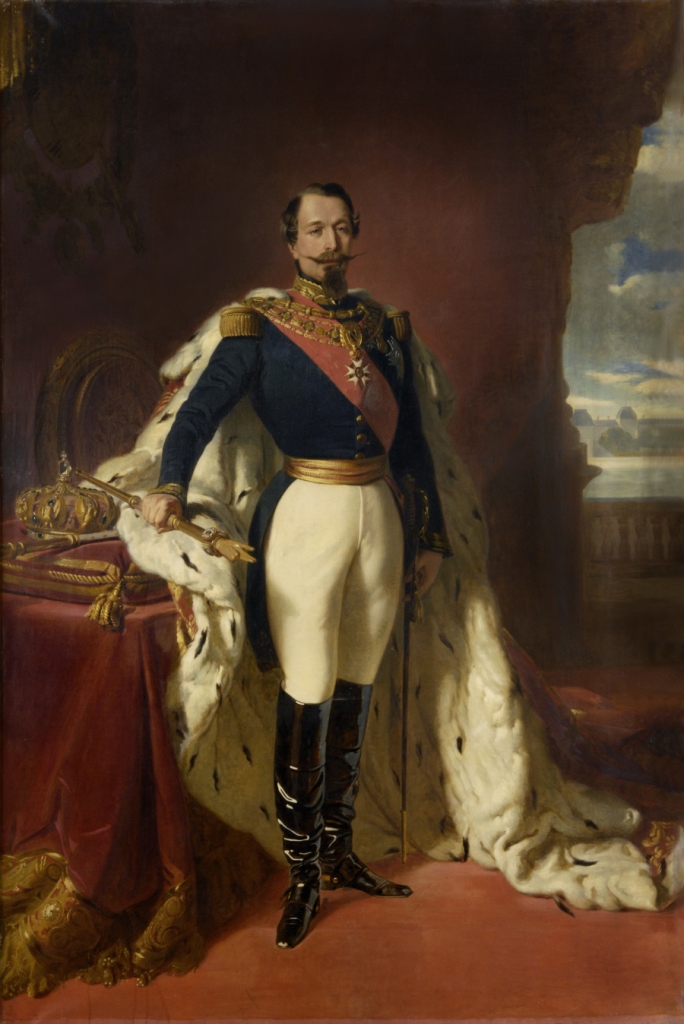
The first accomplishment was architect Alexis Paccard’s construction of the new drawing rooms on the ground floor of the Gros Pavillon. A gallery, a large drawing room, a study and a smoking room were designed to open onto the lawns of the English Garden and the Fountain Courtyard. The Empress decided to create a museum in one of the drawing rooms which brought together all the Chinese objects from the pillage of the Summer Palace in Beijing by Franco-British troops in 1860. These exceptional treasures were accompanied by Siamese diplomatic gifts given to the Emperor. The Emperor received the embassy of King Rama IV Mongkut at the castle’s ballroom on 27th June 1861. The exotic nature of the Orient dazzled the court.
For even if the summer holidays at court normally took place in a relaxed atmosphere, diplomacy was never far from absent: On 15th and 16th December 1856, the royal prince of Prussia (future emperor William Ist) was invited to Fontainebleau. Between 17th to 24th May 1857, the castle welcomed the King of Bavaria Maximilian II. The same year, the Grand Duke Constantin, brother of the Tsar of Russia spent a lavish time marking the inauguration of the latest creation by architect Hector Lefuel – The Imperial Theatre, which was built in the Louis XV wing, boasted splendid golden button silk fabric and a glittering entrance hall that did not fail to fill their onlookers with admiration.
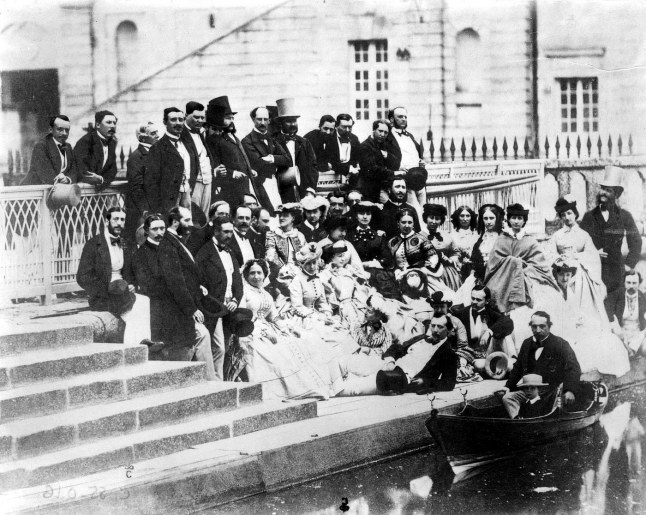
Moving further and further away from the old Oval Court, the heart of the palace eventually drifted into the Court of Honour. At the end of the reign, a stucco staircase was built (1867-1868) between the ground floor and the first floor of the Louis XV wing to form a new access to the Grand Apartments.
In 1870, the collapse of the Second Empire brought an end to these transformations of the castle; a place that never was to see the return of Napoleon III and Eugenie, and it sounded the death knell for 800 years of monarchy that had occupied it. Now the Republic was well established in France what was to become of the ‘true abode of kings’ without its main inhabitants?
